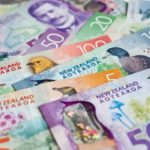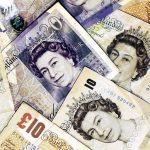The US dollar came off highs unseen in four months against the Japanese yen on Friday, as earlier Bank of Japan Governor Haruhiko Kuroda said that he will do his utmost in order to curb a climb in long-term yields.
Having reached its highest point since July 8th at 101.36 at 3:40 GMT, USD/JPY pair distanced from that level to trade at 101.01 at 9:17 GMT, losing 0.15% on a daily basis. The pair was set for its fourth consecutive weekly gain, which appeared to be also the longest sequence since February. Support was likely to be received at November 21st low, 100.17, while resistance was to be encountered at July 8th high, 101.50.
USD/JPY strengthened yesterday, after at its meeting on policy Bank of Japan (BoJ) left its benchmark interest rate unchanged at current record low level of 0.10% in consonance with expectations, as the central bank strives to achieve its 2% inflation objective in 2015.
The bank also kept its pledge to increase nation’s monetary base by 70 trillion JPY (695 billion USD) per year at the meeting, as has been projected by economists. The decision on policy came only three weeks after bank’s last meeting and has been reached after an unanimous vote. The outlook over economy has been left without change, with recovery going at a moderate pace and exports – increasing.
“The BOJ’s policy stance should be working towards a weaker yen,” said Sean Callow, a senior currency strategist at Westpac Banking Corp. in Sydney, cited by Bloomberg News. “Higher yields in the States will surely draw more outflows from Japan, where the BOJ is maintaining QE at full pace”.
Speaking in a parliament in Tokyo today, Bank of Japan Governor Haruhiko Kuroda said that the yen was not “excessively weak”. The rate of inflation in the country is expected to hit BoJs 2% target in the latter half of the central bank’s two-year time frame, while policymakers are expected to adjust the asset-purchasing program in accordance with economic conditions.
The extra yield, which US 10-year government bonds offer over their 10-year Japanese counterparts increased to 2.19 percentage points on November 20th, or the most since September 12th based on closing prices.
Meanwhile, the US dollar received a certain support on Thursday, after the Department of Labor said that the number of people who filed for unemployment assistance in the United States decreased by 21 000 to reach 323 000 during the week ending on November 16th 2013, or the lowest number since September. Expectations pointed that the number of claims will fall less, to 335 000. Last week contained a national holiday, as during such days the number of submitted claims is lower than usual. The average number of claims during the past four weeks, an indicator considered as lacking seasonal effects, dropped by 6 750 to 338 500.
At the same time, the number of claims, submitted in a period of over one week, which refers to people who have already been receiving jobless benefits, climbed by 66 000 to reach 2.88 million during the week ending on November 9th.
Another positive impulse for the US currency came after, also on Thursday, Markit Economics reported, that the index, gauging manufacturing activity in the United States, rose to a reading of 54.3 in November, according to preliminary data, which marked an eight-month high. The final value of the manufacturing PMI came in at 51.8 in late October. Values above the key level of 50.0 are usually considered as an indication that activity in the sector has increased, as November’s result implied an even faster pace of expansion. The sub-index of new orders also registered a higher rate of increase in November, while the sub-index of employment demonstrated a slide.
Elsewhere, the Japanese currency was losing ground against the euro, with EUR/JPY cross up 0.21% on a daily basis to trade at 136.68 at 9:40 GMT. GBP/JPY pair was trading little changed, dipping 0.05% to trade at 163.81 at 9:42 GMT.





